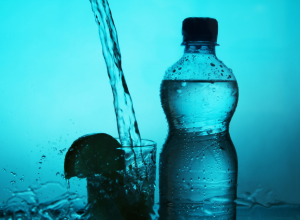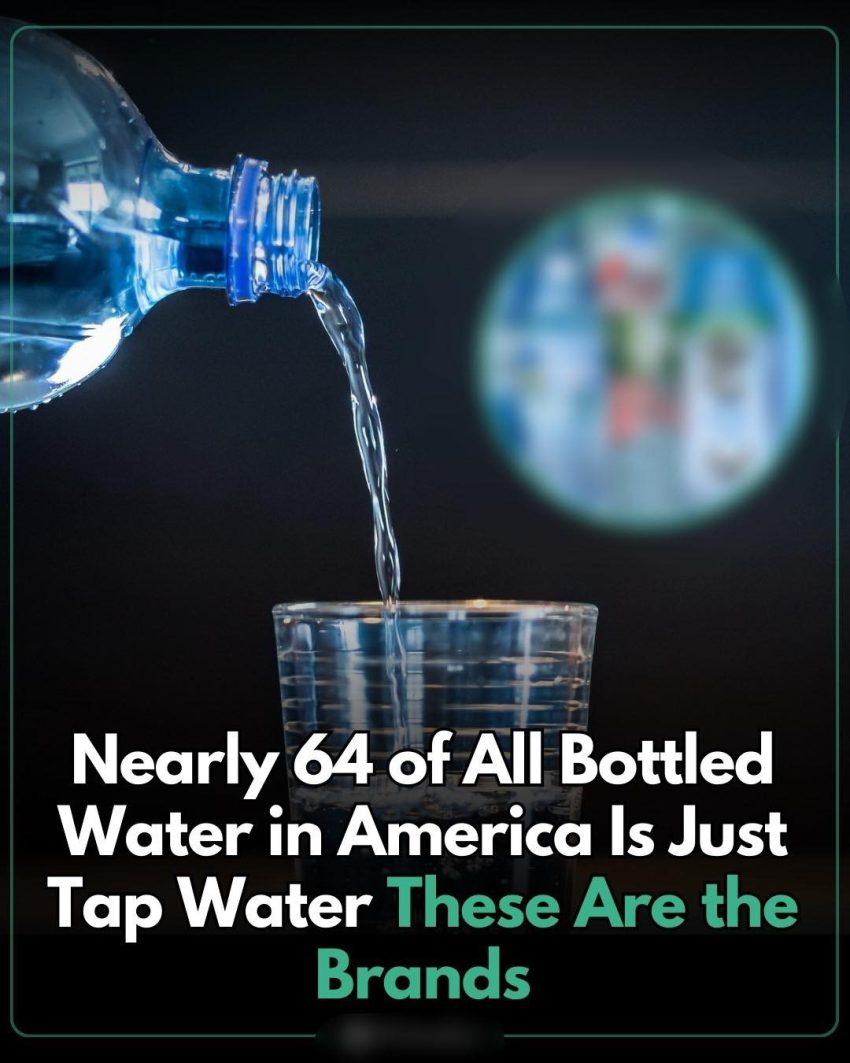How would you feel about spending hundreds or even thousands of times more on something that is freely accessible at home?
Bottled water is purchased by millions of people in the United States because they consider it to be safer, healthier, or more pure than the water that is available from the tap. On the other hand, a recent study found that municipal water sources, which are the same tap water that the vast majority of people already have access to, are responsible for providing more than 64 percent of the beverages that are consumed in bottles in the United States.
In addition, there are certain businesses that do not filter this water before bottling it, and there are times when their products contain unsafely high levels of pollutants.
The fact that this is the case raises significant concerns regarding transparency and whether or not customers are getting what they paid for.
There are some companies that do inform their clients about the water sources and treatment processes they use, but the majority of firms do not.
Because there is a lack of transparency, a lot of people wonder whether the high price of their bottled water is genuinely justified or whether it is just tap water that has been effectively marketed and turned into bottled water.

In the Bottled Water Industry, the Difference Between Perception and Reality
The promise of purity has been the foundation upon which the bottled water industry has built its empire. Labels and marketing materials for the company’s products feature imagery of pristine springs and mountains streams.
Through the use of this carefully crafted perception, as well as concerns over the flavor or safety of tap water, millions of people have been convinced that purchasing bottled water is a superior choice. What is the result? A multibillion-dollar industry that is driven by the attractiveness of premium quality and the convenience of bottled water is supported by the fact that more than 15 billion gallons of bottled water are consumed annually by people in the United States.
But the image and the reality are usually at odds with one another.
Research indicates that a large amount of bottled water originates from municipal water supplies, which are the same water that is available from the tap in our homes.
There are some companies that merely perform a minimal filtering of the water before bottling it, while there are others who do not modify the water at all and demand exceptionally high fees.
Despite the fact that public water systems in the United States are often subject to stricter safety rules than bottled water, the industry’s claims of superior quality are further put into question by the fact that this is the case.
There is also another significant problem, and that is transparency.
A significant number of businesses that specialise in the sale of bottled water fail to disclose essential information regarding the water sources, treatment techniques, and any contaminants that they use.
As a result, consumers are forced to rely on marketing methods rather than on information that has been verified. While some brands, such as Gerber Pure, Nestlé Pure Life, and Penta, have taken steps toward increasing openness, the bulk of businesses continue to give the impression that they are pure without presenting any concrete evidence to support their claims.
Because of this disparity between image and reality, ethical questions have been raised regarding the acts of the industry, as well as their effects on public health and the trust of customers.
Transparency and contamination are two aspects of the brands that you should be aware of.
There are variations in the quality of bottled water. Despite the fact that certain brands have been subjected to criticism for their doubtful quality and lack of openness, others continue to uphold high standards and transparency.
When customers are aware of which businesses live up to their expectations and which do not, it can make a huge impact in their purchasing decisions.
Both the Acadia brand sold by Giant Food and the Sam’s Choice brand sold by Walmart have been criticized for the frightening levels of contamination that they contain.
Sam’s Choice periodically exceeded the safety criteria for bottled water in the state of California, according to research. This is significant since consumers pay a premium for what they perceive to be of higher quality.
Concerns were raised regarding the potential health risks that may be concealed in certain bottled water products after same problems were reported in Acadia.
On the other hand, consumers have praised businesses like Nestlé Pure Life Purified Water, Penta Ultra-Purified Water, and Gerber Pure Purified Water for their transparency in the water industry.
As a result of their openness regarding their water supplies, purification procedures, and safety guarantees, these companies have been able to earn the trust of customers in a sector that is typically shrouded in ambiguity.
The overall market for bottled water, on the other hand, continues to be unpredictable. Consumers are required to navigate the complexities of the industry, specifically the fact that certain businesses appear to be more focused on profit than on public health and transparency.
If you choose businesses that share your ideals and demand responsibility, you may be able to make purchases that are more thoughtful and informed.
Examining the Safety and Quality of Bottled Water in Comparison to Tap Water
At first glance, it could appear that bottled water is the less risky and more reliable option.
Because of its appealing packaging and claims of purity, it appears to be more beneficial than drinking water from the tap. On the other hand, a more in-depth investigation finds that the transparency, safety, and regulations of tap water in the United States are frequently superior to those of bottled water.
Public tap water systems are regulated by the Environmental Protection Agency (EPA), which upholds stringent safety requirements and mandates that they undergo routine testing.
In addition, these systems are required to offer clients with information that has been confirmed by revealing particulars concerning the technique for treating pollutants. Bottled water, on the other hand, is regulated by the Food and Drug Administration (FDA), which has more relaxed regulations than most other regulatory bodies.
There is no requirement for businesses who sell bottled water to provide information about the sources of their water or the quality of their water, nor are they required to conduct tests as frequently as municipal water systems.
This regulatory loophole represents a substantial source of concern. Numerous varieties of bottled water have been found to contain hazardous contaminants, including chemical wastes, microplastics, and arsenic, as indicated by researchers’ findings.
In contrast, numerous public water systems provide an alternative that is not only more environmentally friendly but also far less expensive, and they meet or exceed the requirements for safety.
Another advantage of drinking water from the tap is that it is more environmentally friendly than other types of water because it does not require the use of single-use plastics, which contribute to a rise in waste and pollution.
Although bottled water may be a viable solution in certain circumstances, such as in locations where there is no access to clean water from the faucet, it is typically less sustainable, safer, and more transparent than the water that is available from the tap.
Customers can avoid falling for marketing ploys and give preference to solutions that are beneficial to their health, their wallet, and the environment if they are aware of these distinctions and choose to pay attention to them.
Actions That Customers Can Take
If consumers are provided with the right knowledge, they will be able to make more informed decisions regarding the water they use, which will be better for their health and the environment.
Despite the fact that the bottled water industry is driven mostly by convenience and carefully created perceptions, it is possible to dispel marketing misunderstandings and make more informed choices if you are aware of the true story behind its strategies.
Promote Transparency: Show your support for businesses that are open and honest about the water sources they use, the treatment methods they employ, and the levels of impurities they permit. Labels should contain information that is both understandable and easy to be verified. Some companies, such as Penta Ultra-Purified Water, Nestlé Pure Life, and Gerber Pure, have established themselves as leaders in terms of openness. In the industry, the selection of these businesses sends a clear statement about how vital it is to be accountable to customers and to earn their trust.
It is recommended to purchase filtration systems as well as reusable bottles. Utilizing reusable water bottles and high-quality home filtration systems is a practical and cost-effective alternative to purchasing plastic bottles of water. Additionally, filtration systems can significantly reduce the amount of trash produced by single-use plastics by removing pollutants from tap water. This is in addition to the fact that they provide peace of mind. A single unimportant modification has the potential to have a major impact not only on the environment but also on your finances.
It is important to promote the utilization of public water systems. By campaigning for improved municipal water infrastructure in your community, you may boost public water systems, which usually meet or exceed the safety standards for waters that are sold in bottles. Using water from the tap not only improves your health but also helps reduce the amount of garbage produced by plastic bottles and the negative influence that the production of bottled water has on the environment.
Make sure you are an informed consumer by educating yourself on the quality of the water you consume and conducting research on the businesses from which you purchase products. Your ability to hold firms accountable and to make decisions that are in line with your environmental, ethical, and health goals can be facilitated by your familiarity with relevant information.
By taking these steps, you will be able to reduce your reliance on bottled water, improve your financial situation, and contribute to the preservation of the environment. The market has the potential to be altered in favor of greater sustainability, responsibility, and openness, despite the fact that individual actions might not appear to be very significant when viewed as a whole.
Facilitating the Making of More Intelligent Decisions for a More Open Future
The growth of the bottled water industry can be attributed to the dissemination of the false notion that the water comes from springs that are spotless and unadulterated.
In spite of this, we have found that roughly 64 percent of bottled water is actually tap water that has been disguised as bottled water. This is in contrast to the water that comes from your faucet, which is typically subject to less monitoring and transparency.
Customers end up paying more for promises that are regularly broken, as a result of the fact that certain businesses place a higher emphasis on ethics and openness than others do on quality.
Your ability to make informed decisions is directly correlated to the level of knowledge you possess regarding bottled water.
Choose companies that make investments in reusable bottles and filtration technology, prioritize transparency, and encourage the development of public water infrastructure.
In addition to putting your health and finances first, these measures also contribute to reducing the damage that is caused to the environment by habits that are not sustainable and single-use plastics on a daily basis.
Obtaining knowledge is the first step toward bringing about change, and every action you make sends a message to the world around you.
By working together to demand accountability and a future in which the water we drink, regardless of whether it comes from the tap or in a bottle, is as honest and pure as it claims to be, we have the capacity to shift the narrative of water.
